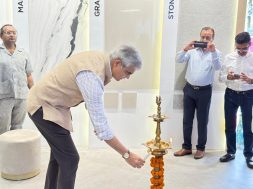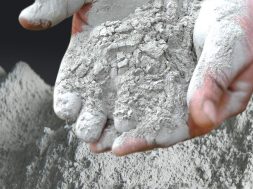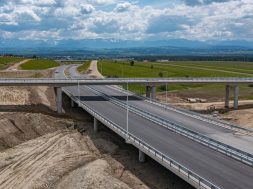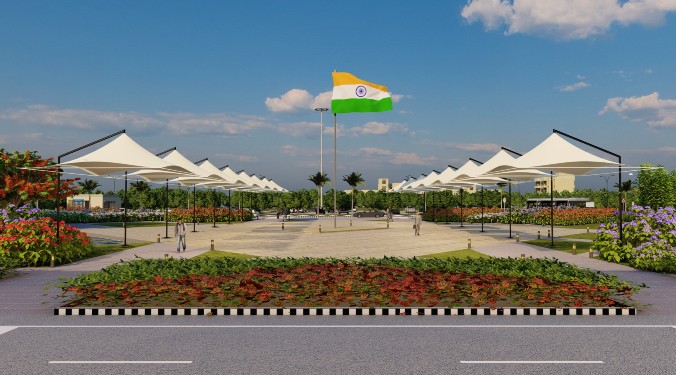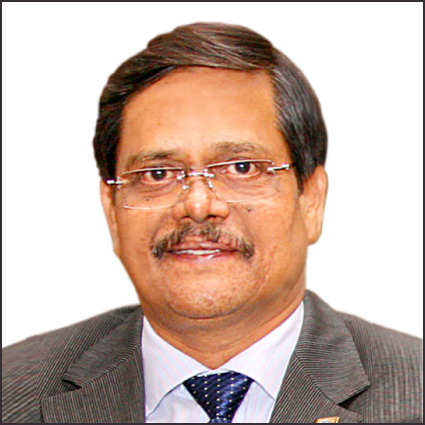
Unlike in the past when plumbing was considered a ‘dirty business’ and ‘nuisance purchase’, there is better awareness about the profession now.
Sudhakaran Nair, President, Indian Plumbing Association
Of late, plumbing is being considered as a lucrative profession due to increasing opportunities, opines Sudhakaran Nair, President, Indian Plumbing Association. He also talks about how IPA is committed to redefine plumbing standards in India.
Could you share your views on the plumbing industry in India?
Neglect of over six decades after independence had rendered plumbing standards in India as poor as in the least developed and developing nations. Although plumbing is considered part of ‘Public Health Engineering’ in our country, this segment of engineering hardly received the attention it deserves. The plumber who is responsible to implement this ‘Public Health Engineering’ subject on the ground seldom got the recognition he deserves. Plumbing was appreciated only when the troubles started! The past five to ten years have thankfully seen a major shift in this attitude.
The first modern plumbing code of current global standards – Uniform Plumbing Code-India (UPC-I) was published by the Indian Plumbing Association (IPA) in 2008, in partnership with International Association of Plumbing & Mechanical Officials (IAPMO) of USA. The parent code (UPC) of IAPMO has been in use in the USA and several other countries for over eighty years. The Technical Committee (TC) of IPA reviewed, edited and modified UPC to suit Indian conditions and UPC-I was published. UPC-I has undergone two more revisions since and the most comprehensive edition Uniform Illustrated Plumbing Code-India (UIPC-I) was published in 2014.
In addition to UIPC-I, the IPA-IAPMO partnership has published a number of supplementary codes and their revisions such as: Green Plumbing Code Supplement- I (GPCS-I); Uniform Solar Energy Code-I (USEC-I); Uniform Swimming Pool Code-I (USPC-I); Water Efficient Products-I (WEP-I).
The recent IPA publication “A Guide to Good Plumbing Practices” has been well received by the industry. This publication is meant for one and all as it explains the fundamentals of safe plumbing in simple language with drawings and illustrations which even the common man can grasp.
Unlike in the past when plumbing was considered a ‘dirty business’ and ‘nuisance purchase’, there is better awareness about the profession now. More and more young engineers and technicians are now willing to join the profession as it offers excellent growth prospects.
All these years, we had no colleges or polytechnics teaching the subject of plumbing. Even architects and civil engineers responsible for construction projects have little or no education on plumbing.
Plumbing Education to Employment Programme (PEEP) launched by IPA – IAPMO in 2010 has well structured, code based plumbing education in different categories. Green Plumbers-India (GP-I), initiative by IPA–IAPMO, trains plumbing professionals in water and energy conservation methods. PEEP and GP-I programmes have seen reasonable success.
It is heartening to see that plumbing has been accorded priority by the government in the programmes of National Skill Development Council (NSDC). The Indian Plumbing Sector Council, which is part of NSDC, is spearheading training and certification of plumbing professionals in large numbers. This initiative with government support is expected to address the shortage of skilled personnel in our plumbing industry.
With the relative ease of doing business in India since in recent years, a large number of reputed overseas plumbing product manufacturers are now well represented in India, resulting in availability of many world class plumbing products in our domestic market.
IPA has entered into an agreement with Messe Frankfurt, organisers of world’s largest and best plumbing exhibition (ISH) to conduct ‘ISH India Powered by IPA’. The first exhibition is scheduled in Delhi in February, 2017. With Messe Frankfurt on board, the show will attract several global manufacturers to participate. Indian manufacturers will have opportunities to enter into partnerships for export of their products and to enter into fresh collaborations.
As mentioned earlier, with availability of modern codes and standards, induction of fresh talents into the profession and access to world class plumbing products; the Indian Plumbing Industry is now evolving in the right direction.
Discuss on the contribution of plumbing on health and safety.
Clean potable water and safe sanitation are pre-requisites for a healthy society. Good plumbing standards can help prevent dangerous diseases such as cholera, diarrhea, dysentery, hepatitis A, typhoid, polio etc. It is common knowledge that half the hospital beds across the world at any given time are occupied by those affected by water and sanitation related diseases. The medical profession will vouch for the fact that every additional rupee spent on better plumbing standards can save up to ten rupees in medical bills. Developed nations with advanced plumbing industries recognise that ‘A Plumber is Nation’s Health Worker’.
Life expectancy is known to have improved greatly in developed nations after invention of the water closet and provision of safe drinking water and sanitation to their citizens some hundred and fifty years ago.
How would you redefine plumbing standards in India?
Despite the limitations of a voluntary organisation with no external funding, IPA has contributed to the transformation of the Indian plumbing industry. IPA’s active presence at the World Plumbing Council (the global body of plumbing organisations) facilitated partnerships with world leaders of the profession for the betterment of the trade in India.
Apart from what have been discussed earlier, IPA publishes India’s only magazine devoted to the plumbing profession – Indian Plumbing Today. Twenty-one Indian plumbing conferences, one World Plumbing Conference and six plumbing exhibitions of international standards have been conducted since IPA’s inception in 1993.
The three major factors contributing to good plumbing standards – Modern plumbing codes, trained work force and technically correct materials and equipment – all these are now in focus.
What we urgently need is the involvement of the government to bring in legislations and to introduce monitoring mechanisms to ensure implementation. We have such systems in place for fire-fighting and electrical installations currently in our urban centres.
What opportunity do you see for plumbing sector in smart cities?
Plumbing is an essential commodity in every structure and city meant for human habitation, whether ‘Smart’ or otherwise. Water and energy conservation will receive added focus in ‘Smart Cities’. Conservation of water also results in conservation of energy as storage, transportation, treatment and distribution of water consumes energy.
The green building certification programme already in place takes care of water conservation measures in buildings. An additional step needed is mandatory use of plumbing products with third party certification. A globally recognised certification process for plumbing products is already launched in India by IAPMO, supported by IPA. Several leading Indian manufacturers have availed of this facility. Such globally benchmarked certification will also enable our domestic manufacturers to export their products to the international markets, including those of the developed nations.
Modern plumbing standards deal with water conservation and the resultant reduced tasks and costs of transportation, treatment and disposal of human waste.
The water crisis currently being faced in the nation should awaken us. Conservation of water is not the responsibility of government alone; each citizen has to be a partner in the endeavour. The world population has increased from 3 billion in 1959 to 7.3 billion in 2015 but the total quantum of water available to us has remained constant. Therefore, we should not wait for smart cities to happen before we initiate water and energy conservation measures.
Monitoring water conservation by metering will be part of the smart city initiative. Water should be made available at sustainable costs as what we pay today does not cover even the basic costs incurred in conveying wholesome water to us. Anything cheap or free will not be valued.
What are your views on plumbing system in India?
Unlike even ten years ago, the Indian plumbing fraternity today has the skill levels and capabilities to design and install safe plumbing systems, comparable to global standards. The sad part is that no more than 25 – 30 per cent of our total plumbing works are entrusted to this ‘organised sector’ and the rest is handled by just anyone. Building owners learn the hard way as occupants suffer and building structures are damaged due to incorrect plumbing installations. We need a huge awareness campaign to highlight the pitfalls of ignoring this vital trade.
Do you think plumbing systems in India need modifications in design and installation?
Our typical mind set is to resist anything new. The plumbing systems adopted by us hitherto are part of our colonial legacy. The world has moved away, modern technologies are evolving rapidly across the world and are now within our reach. Good plumbing need not be more expensive. In reality, by adopting plumbing systems based on modern codes like UIPC-I will certainly bring down the costs. The involvement of the plumbing professional should start right from the stage of architectural planning of a building.
The structures we build, especially in our urban centres, are now far larger and more sophisticated. Adherence to modern plumbing practices can save costs and provide trouble-free installations. Ignoring safe plumbing standards will be at one’s own peril!
Cookie Consent
We use cookies to personalize your experience. By continuing to visit this website you agree to our Terms & Conditions, Privacy Policy and Cookie Policy.

